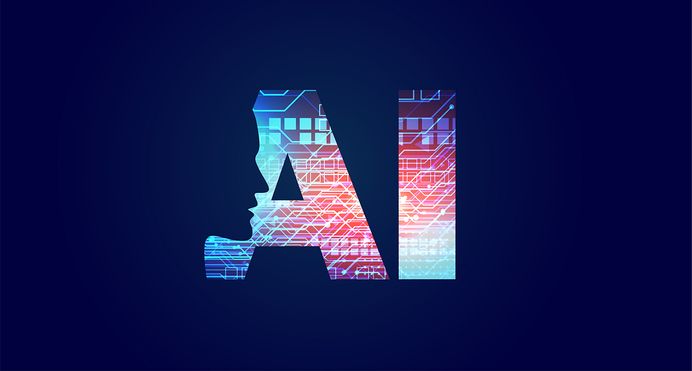
Roadmap to Integrating an Omni Channel Chatbot
“Smart speakers, connected appliances, voice assistant, smartphones and beyond. I believe that the world is quickly shifting from a place of texting, typing and swiping to one of audio/voice as navigation and user experience”.Mitch Joel in his article on Six Pixels of Separation aptly stated that consumers are increasingly using different channels and technology to connect with each other and with brands.
As businesses adopt and adapt to emerging technology to connect with customers, delivering a seamless, omnichannel user experience is going to be ‘the’ challenge that they would need to address in 2019.
The BFSI sector, for instance, is witnessing extensive digital disruption with the adoption of new AI-powered banking technology. Digitally-empowered customers today support the use of a virtual assistant, AI banking assistant or an omni channel chatbot as a personal banker.
Revolutionizing CX with an Omni Channel Chatbot
Consider these stats, by 2020, chatbots will handle approximately 85% of customer service interactions according to Gartner and by 2022, chatbots will contribute to cost savings of over $8 billion annually, according to a report by Juniper. Banks and financial institutions need to…
…Have a single and coordinated view of their customers’ journey.
…Deliver a unified experience of the brand not limited to a channel of a brand.
…Evolve and leverage the power of banking technology to improve customer experience (CX) and save costs.
In an age where millennials rule the roost, self-organizing devices, self-setting applications, auto-filling forms, auto-transfers, and self-transaction banking is expected. The essence of an omni channel chatbot revolves around creating a click-free, hands-free, friction-free, zero touch, seamless, omnichannel user experience. Here’s a roadmap that illustrates how an omni channel chatbot can be integrated.
A Chatbot Roadmap to Integrating an Omni Channel Chatbot
Here are 5 milestones to achieve when creating a roadmap to integrate an omni channel chatbot:
1. Establish the objective of ‘bot’izing your processes
Before thinking of integrating an AI platform or omni channel chatbot, here are some basic questions, answers to which would help you understand whether AI adoption would make business sense for you:
What is the objective or goal of using a chatbot?
- Is there something lacking that the chatbot can do better?
- Is integrating a chatbot a cost-effective decision?
- How would the chatbot contribute to operational efficiency and revenue generation?
By defining your objective you can understand how a chatbot can enhance your existing business processes and systems. You can also get clarity on what type of personality the bot needs to have, one that will fit your business requirement.
2.Map the omni channel journey of the customer
What is an omni channel journey and experience? How would an omni channel chatbot facilitate a seamless user experience? Consider these two examples…
..A bank has various touchpoints through which banking customers connect, interact and transact. Channels such as mobile banking apps, web chat, SMS, social media, email, robo-advisors, and internet banking are some of the popular channels as compared to call centers, ATMs, branch, kiosks and other physical touchpoints.
An omni channel experience describes the customer’s journey across channels. In the examples, for instance, a customer could begin an interaction on a website or online forum and transit to a web chat or mobile banking app through the guidance of an AI chatbot. What makes the customer’s journey seamless and frictionless is the continuity of the conversation, interaction and transaction, which an omni channel chatbot helps to achieve.
Identifying and mapping customer touchpoints at various stages of a customer’s journey is the first milestone to achieve before integrating an omni channel chatbot.
3. Determine channels that can be ‘bot’ized
Once you know the touchpoints or the channels your customers use, you need to identify those channels, interactions, and transactions that can be automated or handled by bots.
The omni channel experience is augmented today by using technology that not only automates processes but intelligently interacts with customers using machine learning and natural language processing (NLP).
For those channels that are going to be handled by bots, a knowledge base of basic customer queries is needed. This provides a baseline for the AI platform and aligns the personality of the bot to customers’ personas. Using deep learning, the platform learns through every customer interaction, therefore, building a richer knowledge base, eventually.
Based on how your customers connect with your business, identifying those channels which can be handled by bots can improve your operational efficiency and productivity of your teams.
4. Recognize relevant technology required
Customers do not care about the technology you use, they just want the expected user experience. Banking communication technology has evolved and choosing the right one will determine the success of creating an exceptional customer experience.
Some of the existing text-based communication channels include application to person (A2P) SMS, chat widgets, mobile applications, and business APIs. While A2P SMS systems are fairly limited and expensive, chat widgets, mobile applications, business APIs and communication platform-as-a-service (CpaaS) have gained popularity as chatbots have become conversational, intelligent and more human-like. Channels such as a website chat which is text-based and voice-enabled, messengers on social media platforms, chat applications on mobile phones are some of the potential channels through which an omni channel chatbot can be integrated.
Based on your business need, identifying relevant technology would help you achieve cost-effectiveness and ROI on your technology investments.
5. Identify and source resources with relevant skills and capabilities
How well a chatbot performs depends on the brains behind the bot. Its capabilities, intelligence, personality and the ability to service customers better than human customer agents, depends on how it is designed. A chatbot or AI platform needs to have a knowledge base to learn from, use cases to refer to, inferences it needs to learn to make and the natural language database it can simulate from.
Hiring people with the knowledge of integrating a chat platform and people with relevant skills experienced in using tools for machine learning and natural language processing would be relevant. From data scientists to developers and UX/UI designers, you need to ensure everyone involved in the development and integration of the AI platform is aligned with the goal.
Leverage the Power of Bot Technology to Deliver an ‘All Digital’, Omni Channel Experience
As customers are more inclined towards an all-digital experience, banks need to adopt AI and bot technologyto deliver the expected experience. What our platform does is it integrates with existing and future digital channels of banks and financial institutions. By developing a common knowledge base across channels, our platform is designed to be an intelligent first responder to handle lead generation, customer servicing and provide auto-recommendations autonomously. Get to know how our platform can enable you to augment the user experience of your customers and improve your operational efficiency.
Also read our blog on: Digitally Empowered Customer Using AI-Assisted Banking Solutions
Discover the Latest Insights on Interactive Intelligence for Banking Newsletter
Join the newsletter to receive the latest updates in your inbox.



